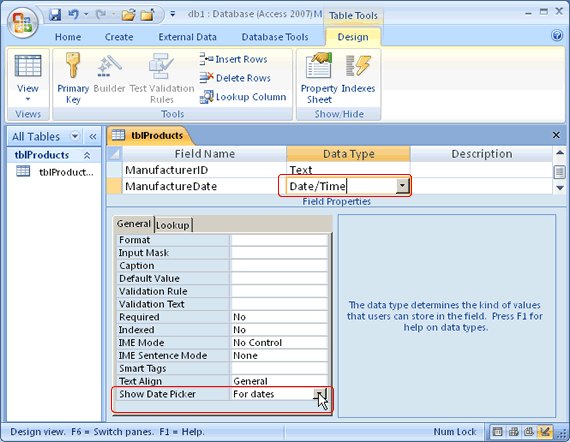
More limitations on data types can be found in Data Type Limitations. This value rounds up to the integer 0, and since the zero day maps to, this is the date used.Ī pipe character (|) cannot be used in a date value, even if enclosed in back quotes.ĭata type limited to Microsoft Access 4.0. Here are some of the most common data types you will find used in a typical Microsoft Access database. Each field can store data consisting of only a single data type. The data type determines the kind of the values that users can store in any given field. Otherwise, Microsoft Access will treat the value as an arithmetic expression and will not raise a warning or error.įor example, the date "March 5, 1996" must be represented as or # otherwise, if only is submitted, Microsoft Access will evaluate this as 3 divided by 5 divided by 1996. MS Access supports different types of data, each with a specific purpose. A Variant containing an array requires 12 bytes more than the array alone. Set intrinsic data types The following table shows the supported data types, including storage sizes and ranges.
#MICROSOFT ACCESS DATA TYPES HOW TO#
Learn how to change the data type for the query parameter. Data types include those in the following table as well as user-defined types and specific types of objects. Procedures should be used to pass character data when using any special character in a character data type column.ĭate values must be either delimited according to the ODBC canonical date format or delimited by the datetime delimiter ("#"). /rebates/&.com252flibrary252fview252fmicrosoft-access-2010252f9780470591673252f21-chapter10. Are your Microsoft Access users having a difficult time getting a parameter query to work The problem may be due to a mismatched data type. Use two consecutive single quotation marks ('') to represent one single quotation mark ('). Data types in Access web apps are similar to those in desktop database (.accdb) files, but there are some differences because the data is actually stored in SQL Server. Data typeĬreating a BINARY, VARBINARY, or VARCHAR column of zero or unspecified length actually returns a 510-byte column.Įven though a Microsoft Access NUMBER field with a FieldSize equal to BYTE is unsigned, a negative number can be inserted into the field when using the Microsoft Access driver.Ī character string literal can contain any ANSI character (1-255 decimal). When creating tables in Access web apps, you need to select a data type for each column of data. The following table shows limitations on Microsoft Access data types. All conversions in Appendix D of the ODBC Programmer's Reference are supported for the SQL data types listed in the previous table. It will not return all Microsoft Access data types if more than one Microsoft Access type is mapped to the same ODBC SQL data type. Unicode and Access 4.0 applications only.

The following table shows the Microsoft Access data types, data types used to create tables, and ODBC SQL data types.


 0 kommentar(er)
0 kommentar(er)
